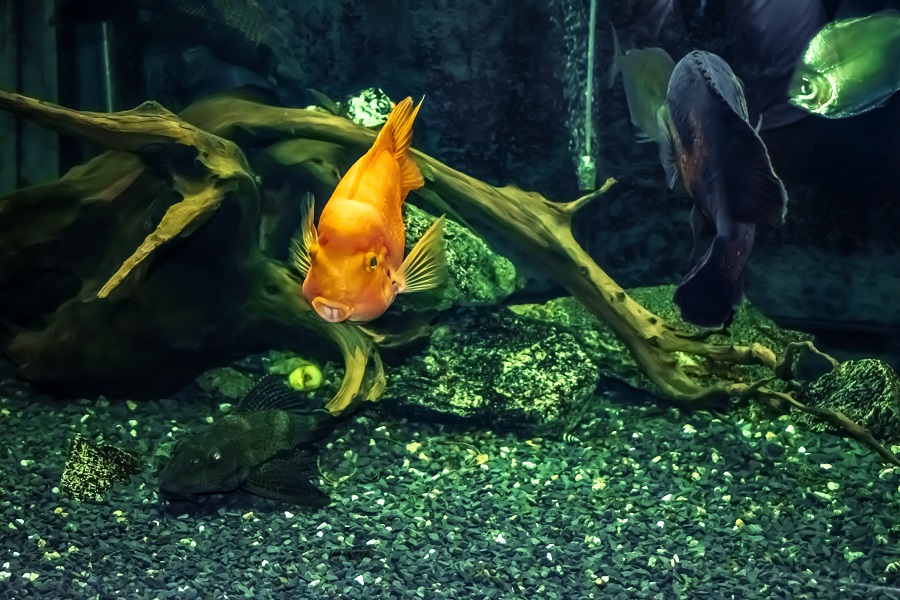Driftwood, like many other natural aquarium decorations, can enhance the atmosphere of your tank and improve its aesthetic appeal. But there are a few key things to consider before introducing this beautiful element.
Some Great Benefits
Instead of garish plastic sunken boats or castles, driftwood can lend a natural touch to any underwater environment. Not to mention a side benefit is the promotion of beneficial bacteria to reduce the influence of potentially toxic compounds thereby making a healthier fish population. Since the wood can leech tannins into the water, your inhabitants receive an extra boost to their immune systems to keep viruses and other common diseases at bay.
In addition, driftwood can yield slightly acidic water conditions to buffer and maintain the right pH balance for a healthy habitat. This can promote better, more natural fish behavior including playing, hiding and breeding while you watch your fish thrive.
Preparing Your Tank
Since any tank environment is a fragile ecosystem, you’ll want to start the process of introducing driftwood by preparing the pieces you chose before adding them to your tank. Be sure to purchase those that are labeled specifically for aquarium use as they will not contain harmful chemicals or preservatives that could inflict harm on your fish population. Buying this material at a landscape supply or rock quarry can present problems you want to avoid.
Here’s how to go about it:
- Sterilize your driftwood by either submerging it in boiling water for at least an hour and cooling back to the temperature of your tank or placing it in a container that is filled with 5% bleach for 15 minutes, then rinsing and soaking in clear, bleach-free water for a few days.
- Keeping the driftwood submerged in aquarium water that would normally be discarded during your normal water change for a period of time will water log it and help keep it from floating in your tank. Some larger pieces may require attachment to a rock back to keep it submerged and placed in the tank where you want it to stay.
- Leaching occurs when your sterilized driftwood is added to the tank. This process can be unsightly for owners but it’s a natural and safe process that happens when the driftwood releases tannins into the water. If you don’t like the look of this, you are welcome to leach your driftwood prior to placing it into your aquarium. To do this, submerge the driftwood in a container that covers the entire piece and do daily water change until the water color remains clear. Once again it’s best to use water from your tank, that would be discarded during your normal water changes, for this as it will duplicate the conditions the driftwood will be kept in and allow you to easily see the expected impact once it makes its way to the tank. Be aware that you’ll need to resterilize before adding to your tank!

